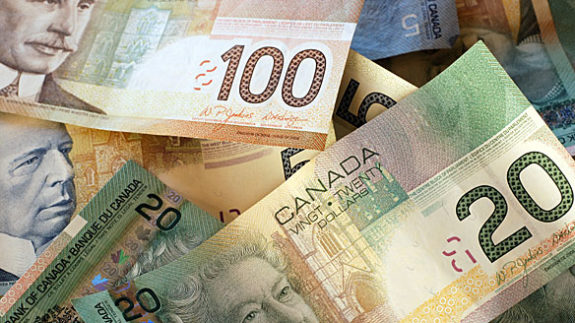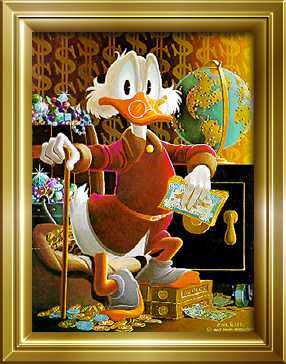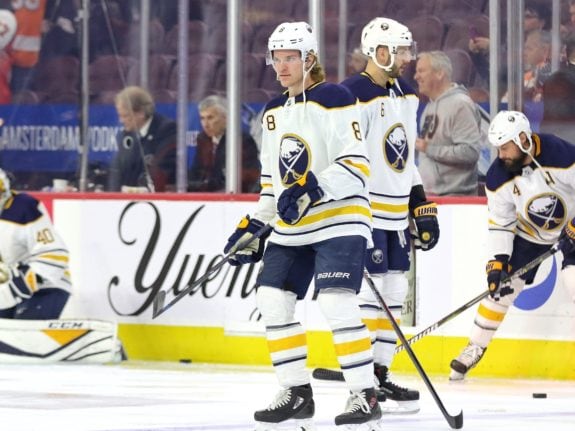The NHL’s 2020-21 season will be unique: New schedule, new divisions, new playoff format, even new roster limits. One thing that doesn’t change with the reduced schedule is the value of each player’s contract. Even though the schedule is reduced from 82 games to 56 (as of now), the base salary of contracts won’t be pro-rated.

Yes, the players are scheduled for only 68% as many games, but their Standard Player Contracts (SPCs) won’t be pro-rated to 68% of the dollar value. Some of the money will be deferred, payable over three years in the future when, hopefully, Hockey-Related Revenue (HRR) returns to pre-COVID levels.
The NHL and the Players’ Association Agreements
There are three documents that currently govern the relationship between the league (the NHL) and the players (the NHL Players Association – NHLPA):
- The Collective Bargaining Agreement (“CBA”) signed February 13, 2013 (dated September 16, 2012 – September 15, 2022).
- The Memorandum of Understanding (“2020 MOU”) of July 2020.
- The 2020-21 Transition Rules (“Transition Rules” – no abbreviation) of December 2020.
The Transition Rules of December 2020 are in addition to the July 2020 MOU’s Attachment M, also named “Transition Rules.”
Pertinent Points on Players’ Pay
Here’s the actual wording from the Transition Rules regarding payments to players:
For the purposes of confirmation, Paragraph 1 NHL Salary shall not be pro-rated for Players playing in the NHL. Payroll shall be processed consistent with past practice (i.e., on a semi- monthly basis) beginning no later than January 29, 2021 or 15 days after the start of the 2020-21 NHL Regular Season should the 2020-21 NHL Regular Season start after January 20, 2021.
–2020-21 Transition Rules, Rule 7. “Paragraph 1 NHL Salary for Players Playing in the NHL”
The key phrase here is “NHL Salary shall not be pro-rated.” If a player is under contract for $3.2 million for the 2020-21 season, regardless of when he signed his deal, that player will receive $3.2 million (minus deferred payments).
However, performance bonuses will be pro-rated, both in terms of the number of games required to meet such a condition and the amount paid for reaching that goal. For example, if a player’s contract says he’ll get a $20,000 bonus for playing in 20 games, both the amount and the number of games is multiplied by [56/82] (56 games divided by 82 games) – roughly 62.3%.

In the example given, a player would need to play in 12.46 games to earn a bonus of $12,460. Needless to say, rounding at the 50% point is applied to milestones such as games played. Pro-rating also applies to such career-related numbers, such as seasons played, retirement and pensions, insurance coverage, and so forth.
Related: NHL “Flat Salary Cap” Will Lead to Bumpy Road
The non-pro-rated salary agreement includes the minor leagues, as well as the CHL. (Yes, some junior league players actually get paid). That, of course, depends on the CHL actually playing this coming season. Here’s that wording:
Players on Loan to the CHL in the 2020-21 season with an SPC that provides for a Junior salary will not have their Junior salary pro-rated. For further clarity, if a Player with a $10,500 Junior Salary is Loaned to the CHL for the 2020-21 season, he will receive $10,500 as per the traditional practice.
–2020-21 Transition Rules, Rule 9. “Paragraph 1 Salary Outside of the NHL”
Players on loan to European clubs that are playing this year are considered to be on loan to a minor league team. If a player is on a two-way contract and his NHL club is paying him rather than the team where he’s on loan, he gets his minor league pay rather than his NHL pay.
Note: players who have contracts directly with AHL and ECHL teams (rather than two-way NHL contracts) are subject to the agreements between those leagues and the Professional Hockey Players’ Association (PHPA).
Escrow and Deferred Salary
“Escrow” under the CBA and ”deferred salary” under the MOU and Transition Rules are two different things. Escrow has been around since the CBA of 2012. For 2020-21, it’s 20% of a player’s salary that’s withheld until the end of a season to ensure that the owners get their fair share. Escrow is a sore point for a lot of players.
Under the CBA, Hockey-Related Revenue is a 50/50 split between the owners and the players. Escrow is withheld until the final calculations are finished and reviewed and scrutinized and questioned and argued and (finally) decided. If HRR falls short, the escrow dollars are used to get the owners their half of the pie. If HRR meets or equal preseason guesstimates, the players get that money (and perhaps a smidge more in a really good year – and, yes, someday we may see a “good year” for HRR).

“Deferred salary” is money that belongs to the player, regardless of HRR. It’s 10% of a player’s contract held back right now to help the owners get through the lean times. The players will see checks on three consecutive October 15ths, starting in 2022 (at least as of the current Transition Rules). The money doesn’t earn interest between now and the three payouts. And it goes to the player regardless of future contract status. Even if a player retires, he’ll receive the deferred money.
The COVID pandemic has hit hockey harder than other major sports. Unlike the NFL, the majority of income for NHL teams comes from fans, not TV contracts. Without fans in the arenas, there are significant reductions in HRR. No ticket sales, no parking and concession income, reduced in-arena sales of licensed logo apparel and trinkets, and so on.
So the bottom line (so to speak) is that escrow dollars come from a player’s paycheck and potentially go back to the owners if HRR falls short of estimates. Deferred money, on the other hand, will make it into the player’s bank account, regardless of HRR, in three annual payments, scheduled to start in October.
Taxi Squads
Under the Transition Rules, each team can have a “taxi squad” of four to six players. The taxi squad players generally will practice and travel with a team, and clubs can recall them to fill a roster spot as necessary. However (perhaps to prevent lineup juggling from game to game?), waiver provisions will be in place. If a player would have to go through waivers to be assigned to a minor league club during a normal season, that player has to clear waivers to be part of the taxi squad.
Players on the taxi squad with two-way contracts get paid as if they were in the minors. Players on one-way contracts will, of course, get full NHL pay while on the taxi squad. (can we call them “taxi squaders”?) NHL insurance will cover taxi squad players, but days on the taxi squad don’t count toward pension qualification.
A team must recall players from the taxi squad to join the active roster and participate in a game. The Transition Rules specify a recall time of 5:00 p.m. Eastern Time on game day. (Um, hey, what about afternoon games?) Teams can form their taxi squads beginning on the last day of training camp, and they will dissolve the day after the end of the regular season. Players on the taxi squad at that time can be recalled or reassigned. For the playoffs, the “Standby Players” rules replace the taxi squad.
If a taxi squad player becomes “unfit to play” through injury or illness (other than a positive COVID test), the club can file a request with the league to have that player not count as part of the taxi squad. The Commissioner (or designated representative) will weigh various factors, including how long the player will be out compared to quarantine requirements for a replacement to join the taxi squad.
The Third Goalie Requirement
There is one group of players who get a subtle benefit from the topsy-turvy 2020-21 season. Teams must keep a third goalie on hand, either on the roster or the taxi squad. That third goalie must be available on all game days, both home and away. (We probably won’t be seeing a Zamboni driver drafted into the net to finish a game this season.)
What if the NHL’s 2020-21 Season is Cut Short?
We don’t know what will happen between now and the scheduled end of the NHL regular and postseasons. COVID could subside, vaccinations could be widely available, and fans could return to arenas. On the darker side, COVID may reach even higher levels of infection and could spread to players and staff, decimating rosters. The Transition Rules hope for the former, but prepare for the latter:
The NHL reserves its rights to assert the applicability of Paragraph 17(a) and (b) of the SPC in the event of a suspension or cessation of the 2020-21 NHL Season. The NHLPA reserves its right to contest the applicability of Paragraph 17(a) and (b) of the SPC in the event of a suspension or cessation of the 2020-21 NHL Season.
–2020-21 Transition Rules, Rule 7. “Paragraph 1 NHL Salary for Players Playing in the NHL”
And here’s what the Standard Player Contract (Exhibit 1 of the CBA) Paragraph 17(a) and (b) say:
17. If because of any condition arising from a state of war or other cause beyond the control of the League or of the Club, it shall be deemed advisable by the League or the Club to suspend or cease or reduce operations, then:
(a) in the event of suspension of operations, the Player shall be entitled only to the proportion of Paragraph 1 Salary due at the date of suspension,
(b) in the event of cessation of operations, the Paragraph 1 Salary shall be automatically canceled on the date of cessation, ….
–CBA, “Exhibit 1, Standard Player’s Contract”
A COVID outbreak that forces an early end to the 2020-21 season would fall under “or other causes beyond the control of the League or Club.” And the money tap would close off. Money earned up to that point would be paid, but any remaining salary would be canceled.
COVID and Injured Reserve Lists
In accordance with Rule 35 of the Transition Rules, a player who tests positive for COVID during the season will be eligible to be placed on the team’s Bona-Fide Long Term Injury/Illness list. The player will be considered “unfit to play” for “the longer of 10 games and 24 days from the date of the confirmed positive.”
So if a player tests positive for COVID, the team can put him on the LTIR list to free up cap space for a replacement, but that player is “unfit to play” for a minimum of 24 days. Salary relief and 24 days without him, or no LTIR and perhaps back after a 10- or 14-day quarantine? That might make for some tough decisions during the season.
There is also one other major COVID-related Transition Rule: A player (or coach) could “opt-out” of playing in the 2020-21 season “without penalty.” With the official opt-out dates now past, only Buffalo Sabres defenseman Casey Nelson opted out of this coming season. After consultation with my favorite Professor of Contracts Law (to whom I am happy to be married), Nelson’s SPC will be “tolled” for the 2020-21 season, meaning he won’t receive payments this season, and his contract will resume with the 2021-22 season.

Under certain circumstances involving risk to family members and others in a player’s household, an opt-out during the season is also a possibility. (Hopefully, there will be no reason for me to write a follow-up article about this particular rule in the coming months.)
What Does All This Mean for a Typical NHL Fan?
From a fan’s perspective, this all means, in a word, “nothing.” Barring unforeseen circumstances (such as COVID running rampant through one or more teams), all this legalese is to protect the income and lifestyles of the players and owners. File it away for the days when we can again sit at the bar and have “discussions” about the minutia of hockey. Put on your home team’s sweater, turn on the TV, grab a beverage, and let’s watch hockey!